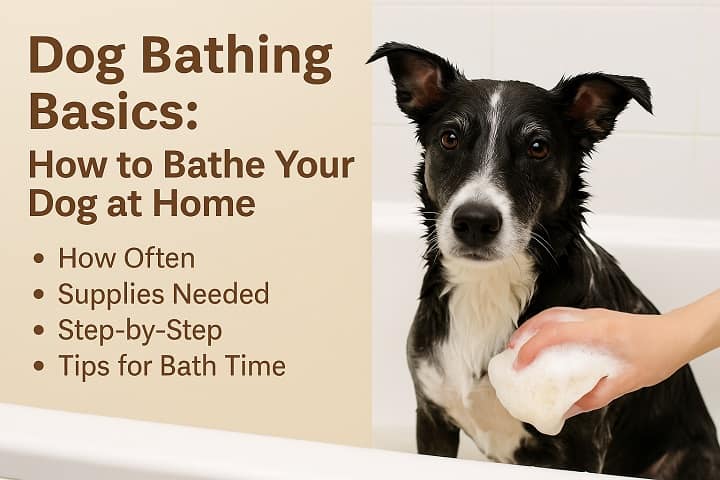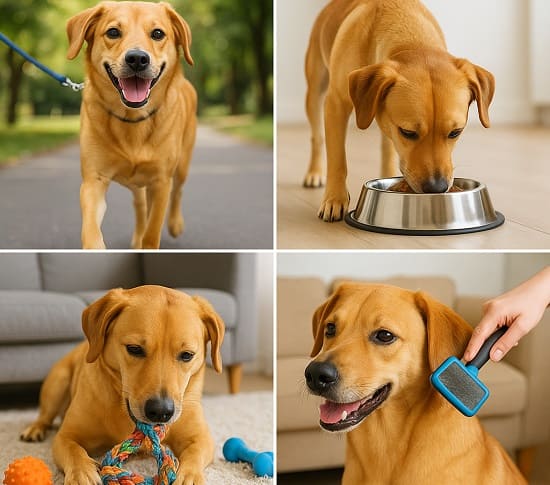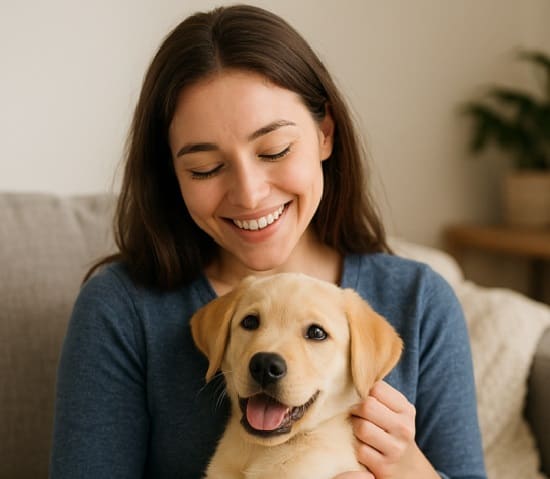Keeping your dog clean is an important part of responsible pet care. A regular bath helps remove dirt, bacteria, allergens, and unpleasant smells. It also helps in maintaining your dog’s skin and coat health. But if you’re a first-time pet parent, it’s normal to feel unsure about how often to bathe your dog, what products to use, and how to keep your dog calm during bath time.
In this guide, we’ll cover everything you need to know about dog bathing—from frequency to step-by-step instructions—so that bath time becomes stress-free and enjoyable for both you and your furry friend.
How Often Should You Bathe Your Dog?
Not all dogs need to be bathed on the same schedule. The frequency depends on factors like breed, coat type, skin condition, and activity level.
- Long-haired or thick-coated breeds (like Golden Retrievers, Huskies): Every 1–2 weeks to prevent matting and odor buildup.
- Short-haired breeds (like Beagles, Boxers): Every 3–4 weeks is usually enough.
- Dogs with skin conditions: Follow your vet’s instructions. Some may need medicated baths.
- Indoor dogs: May not get dirty often, so monthly baths are okay.
- Outdoor or active dogs: Bathe more often, depending on how dirty they get.
Important: Over-bathing can strip natural oils from your dog’s skin and lead to dryness or irritation. Always observe your dog’s needs.
What You’ll Need Before Bathing Your Dog
Before you start, gather all the necessary supplies so everything is within arm’s reach. This helps the process go smoothly and keeps your dog calm.
Bathing Essentials:
- Dog shampoo – Use a mild, vet-approved shampoo made for dogs. Avoid human shampoos as they can irritate dog skin.
- Dog conditioner (optional) – Helpful for long-haired breeds or dry coats.
- Towels – At least two: one for drying and one to place on the floor.
- Brush or comb – To detangle and remove loose fur before and after the bath.
- Lukewarm water – Not too hot, not too cold. Use a bucket or a handheld sprayer.
- Non-slip mat – Prevents your dog from slipping in the tub or bathroom.
- Treats – To reward your dog and make bath time a positive experience.
Step-by-Step: How to Bathe Your Dog at Home
Let’s break down the process into simple steps:
1. Brush Your Dog First
Brushing removes dirt, tangles, and loose fur. This helps shampoo spread more evenly and prevents matting during the bath, especially for long-haired dogs.
2. Set Up the Bath Area
Choose a place where your dog feels comfortable—bathtub, sink (for small dogs), or even outdoors if the weather is warm. Place a non-slip mat or towel on the floor.
3. Test the Water Temperature
Use lukewarm water. Test it on your wrist—it should feel comfortable, not hot.
4. Wet Your Dog’s Coat Gently
Start wetting your dog from the neck down. Avoid getting water directly into the ears, eyes, and nose.
5. Apply Shampoo
Lather a small amount of dog shampoo and massage it into the coat. Be gentle and take your time. Clean areas like under the belly, paws, and tail where dirt tends to collect.
6. Rinse Thoroughly
Leftover shampoo can irritate the skin. Rinse with clean water until there’s no soap left. Double-check under the legs and around the neck.
7. Use Conditioner (Optional)
If your dog has a dry coat or long fur, apply a dog-safe conditioner. Let it sit as directed, then rinse thoroughly.
8. Dry Your Dog
Use a soft towel to gently pat your dog dry. Avoid rubbing roughly. For long-haired breeds or in cold weather, you can use a hairdryer on the lowest heat and speed setting—if your dog is okay with it.
Tips to Make Bath Time Easier
- Stay calm and positive – Dogs can sense your mood. Speak in a calm, reassuring voice.
- Use treats and praise – Reward your dog for staying still and cooperating.
- Make it routine – Regular baths help your dog get used to the process.
- Check ears and nails – While bathing, you can also check for earwax buildup or trim nails if needed.
- Dry ears carefully – Use a clean, dry cloth around the ears. Avoid getting water inside.
Conclusion
Bathing your dog at home doesn’t have to be messy or stressful. With a little patience, the right tools, and a positive approach, you can make bath time an enjoyable bonding experience for both of you. Over time, your dog will become more relaxed, and you’ll feel more confident in handling their grooming needs.
Whether your pup loves splashing in the water or dreads getting wet, this beginner’s guide is a great starting point to make the process smooth and safe.



